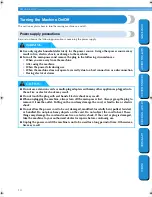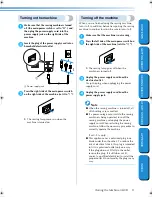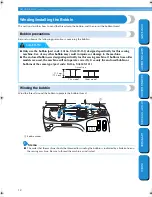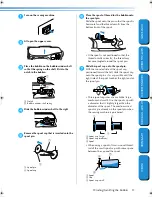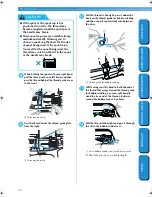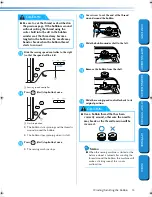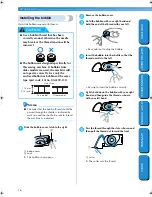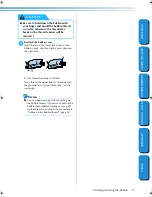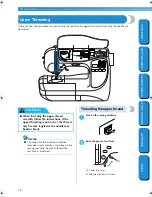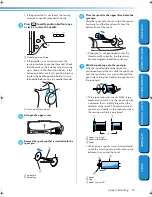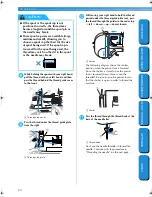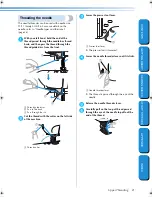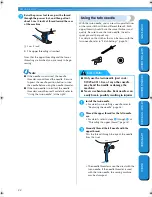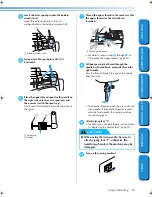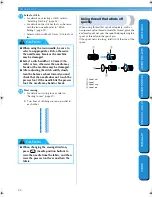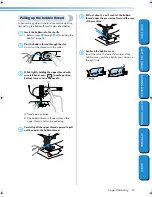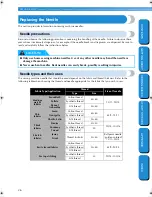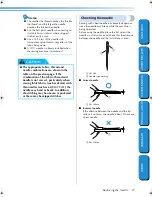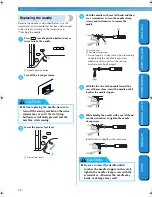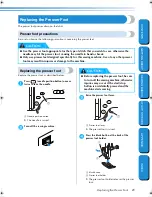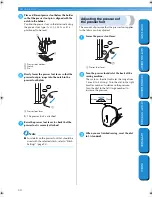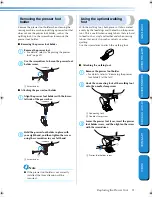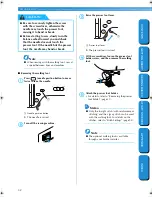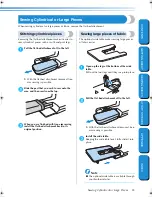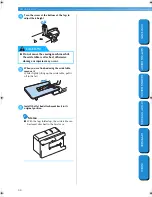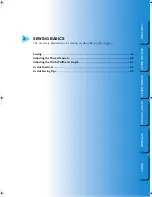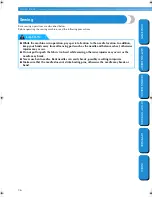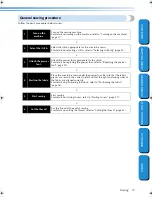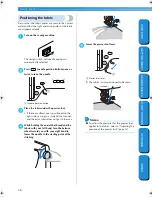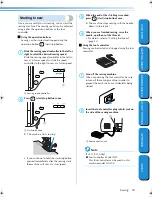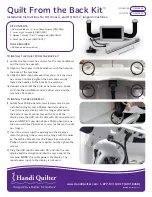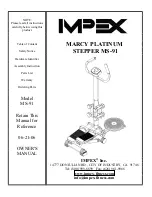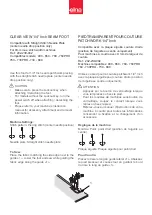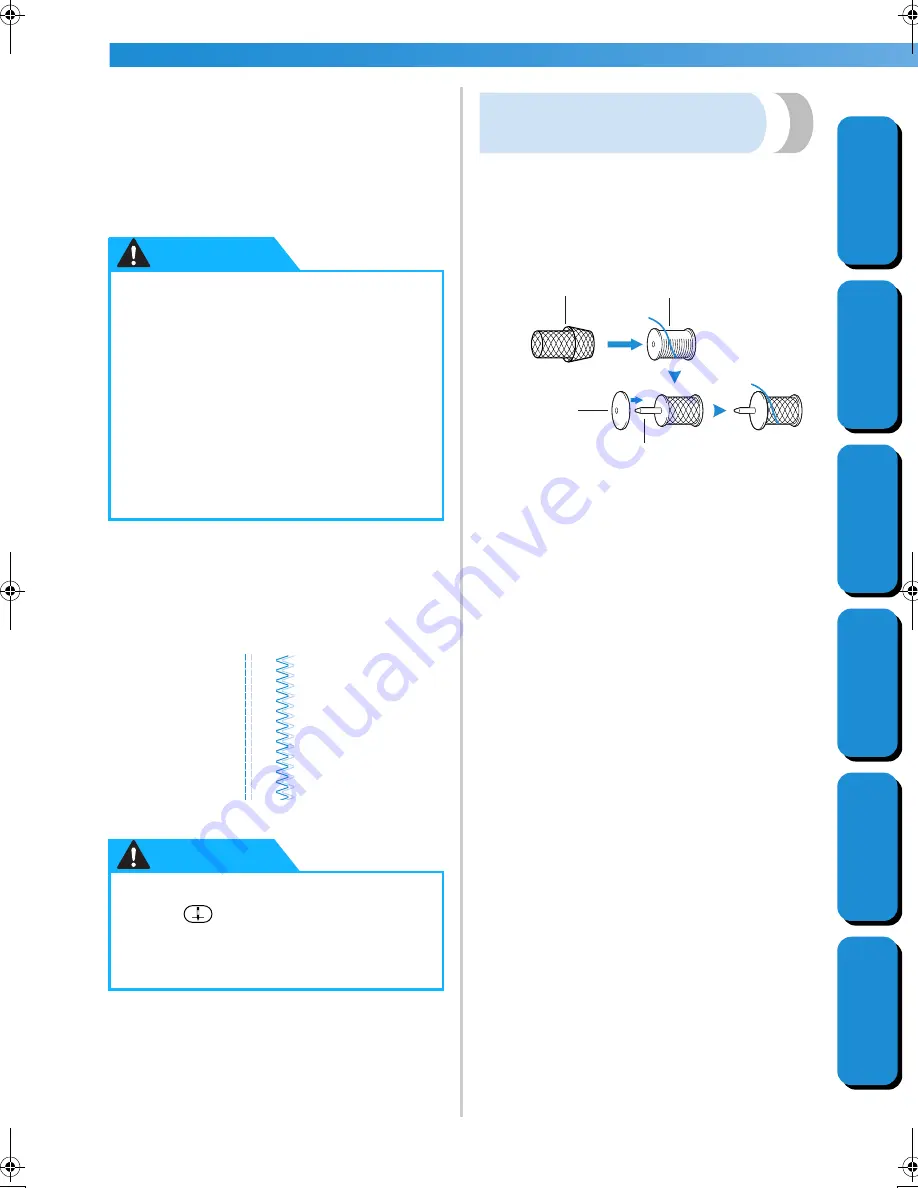
GETTING READY
————————————————————————————————————————————————————————
24
GETTING READ
Y
CONTENTS
SEWING BASICS
U
T
IL
IT
Y
S
T
ITCHES
APPENDIX
INDEX
a
Select a stitch.
• For details on selecting a stitch, refer to
“Selecting Stitching” (page 54).
• For details on the stitches that can be sewn
with the twin needle, refer to “Stitch
Settings” (page 92).
• Select a stitch width of 5.0 mm (3/16 inch) or
less.
b
Start sewing.
• For details on starting to sew, refer to
“Starting to sew” (page 39).
X
Two lines of stitching are sewn parallel to
each other.
Using thread that winds off
quickly
When using thread that winds off quickly, such as
transparent nylon thread or metallic thread, place the
enclosed spool net over the spool before placing the
spool of thread onto the spool pin.
If the spool net is too long, fold it to fit the size of the
spool.
1
Spool net
2
Spool
3
Spool cap
4
Spool pin
●
When using the twin needle, be sure to
select an appropriate stitch, otherwise
the needle may break or the machine
may be damaged.
●
Select a stitch width of 5.0 mm (3/16
inch) or less, otherwise the needle may
break or the machine may be damaged.
●
After adjusting the stitch width, slowly
turn the balance wheel toward you and
check that the needle does not touch the
presser foot. If the needle hits the presser
foot, the needle may bend or break.
●
When changing the sewing direction,
press
(needle position button) to
raise the needle from the fabric, and then
raise the presser foot lever and turn the
fabric.
CAUTION
CAUTION
2
1
3
4
F0_brotherE.book Page 24 Wednesday, May 21, 2003 11:38 AM

